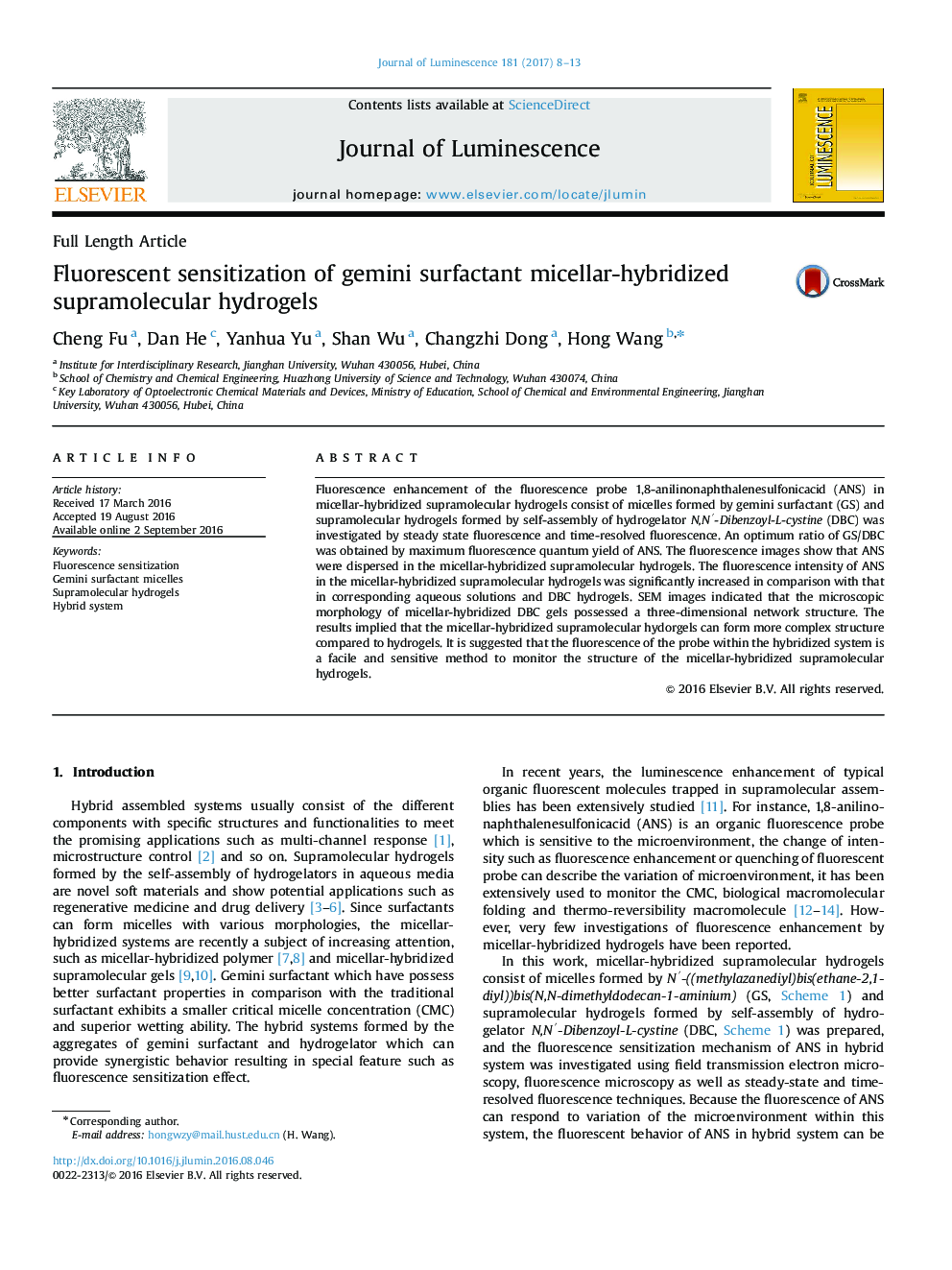| Article ID | Journal | Published Year | Pages | File Type |
|---|---|---|---|---|
| 5398003 | Journal of Luminescence | 2017 | 6 Pages |
Abstract
Fluorescence enhancement of the fluorescence probe 1,8-anilinonaphthalenesulfonicacid (ANS) in micellar-hybridized supramolecular hydrogels consist of micelles formed by gemini surfactant (GS) and supramolecular hydrogels formed by self-assembly of hydrogelator N,Nâ²-Dibenzoyl-L-cystine (DBC) was investigated by steady state fluorescence and time-resolved fluorescence. An optimum ratio of GS/DBC was obtained by maximum fluorescence quantum yield of ANS. The fluorescence images show that ANS were dispersed in the micellar-hybridized supramolecular hydrogels. The fluorescence intensity of ANS in the micellar-hybridized supramolecular hydrogels was significantly increased in comparison with that in corresponding aqueous solutions and DBC hydrogels. SEM images indicated that the microscopic morphology of micellar-hybridized DBC gels possessed a three-dimensional network structure. The results implied that the micellar-hybridized supramolecular hydorgels can form more complex structure compared to hydrogels. It is suggested that the fluorescence of the probe within the hybridized system is a facile and sensitive method to monitor the structure of the micellar-hybridized supramolecular hydrogels.
Related Topics
Physical Sciences and Engineering
Chemistry
Physical and Theoretical Chemistry
Authors
Cheng Fu, Dan He, Yanhua Yu, Shan Wu, Changzhi Dong, Hong Wang,
